Pavement doesn’t last forever. Everyday throughout the United States, roads, parking lots, sidewalks, playgrounds, and more are being installed, repaired, or replaced. It’s big business – and it requires large, expensive machines. In this article we discuss paving, compaction, and milling. Our guide will help you buy the right machine for your pavement jobs.
How It Works
There are three basic operations in paving. You have to lay down the pavement material and compact it. Milling machines are used mainly for pavement repair. In this section we will explain each of these operations.
Milling
Roads that need repair or leveling out require pavement milling. This is also called cold planing. Milling equipment is used to remove the top layer of existing asphalt. Additionally, you can use a milling machine to make rumble strips for new or existing roads. They remove surface asphalt with a rotating drum that has sharp cutters inside of it. As the milling machine picks up the material, it grinds it up then sends it to a conveyer belt. It is moved to a container for transport. All of the asphalt can be repurposed. Because the drum generates a lot of heat as it turns, water is used to keep it cool. Standard milling leaves surface ridges. A smoother surface can be achieved with micro-milling. This machine has a drum with more teeth that are placed closer together. However, it can only be used at shallow depths. After milling, the surface is cleaned. This ensures the new asphalt will adhere properly.
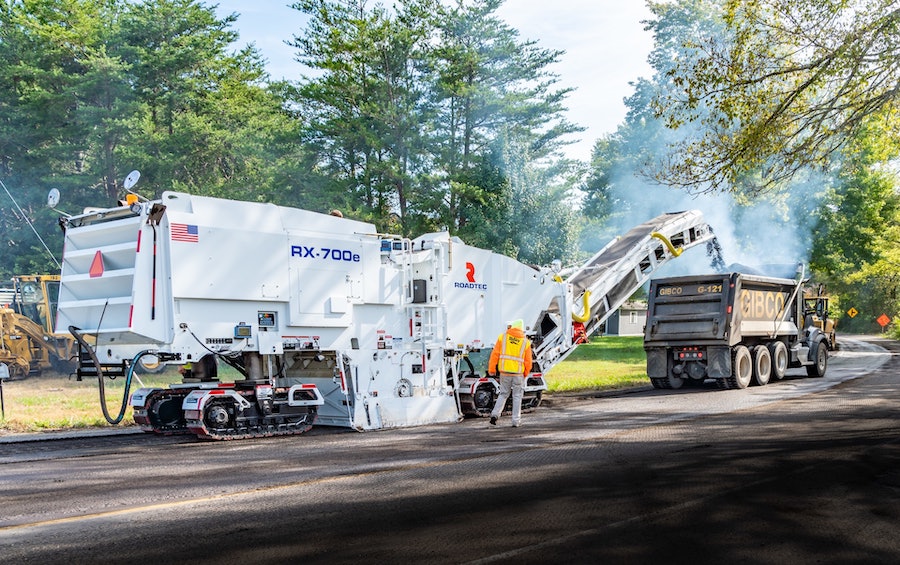
Benefits of milling include:
- Generates reclaimed asphalt pavement (RAP) for recycling (providing another revenue stream).
- Can create rumble strips to warn drivers that they have drifted out of the lane.
- An efficient method for removing failed pavement.
- Traffic can safely travel over its skid-resistant surface until the final layer is installed.
Paving
Pavers have evolved considerably since 1903. The machine started out as a concrete mixer on a frame guided by string. Today pavers are far more sophisticated and guided with lasers.
Asphalt Pavers
Hot Mix Asphalt (HMA) is used for asphalt pavement. It is comprised of about 95% sand, gravel, or stone mixed with asphalt cement. The hot mixture is transported by truck to the job site and dumped into hoppers that are located in the front of the paving machines. Flight feeders on the tractor portion of the machine carry the HMA to the rear of the machine where a set of augers spreads it out to the predefined width. The mixture is then cut to the correct thickness, leveled, and compacted by a screed. This initial compaction must be level enough to prevent the asphalt from cracking.
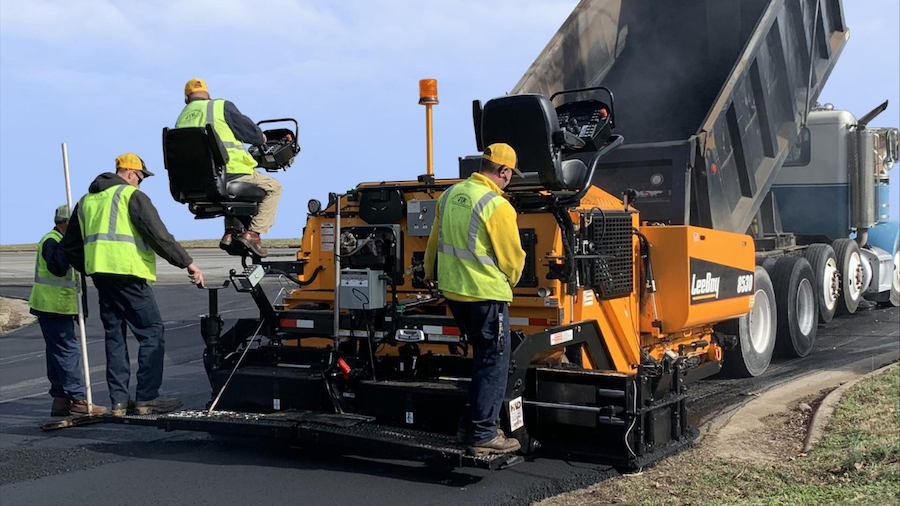
Concrete Pavers
There are several types of concrete pavers, including:
Slipform
The mainline slipform paver is the most popular concrete paver. It does not require forms; it extrudes the paved surface. Fluid concrete is placed in front of the paver. Augers uniformly spread the concrete across the surface. The strike-off plate levels the concrete then removes any excess material. Vibrator tubes or mechanical tamper bars are used to consolidate the concrete. Profiling molds at the back of the machine set the finished grade and elevation of the concrete. Finally, a finishing mechanism initially textures the newly paved surface. Some mainline slipform pavers can change paving widths on the fly. This is much more efficient than adding and deleting sections of finished pavement.
Form-Riding
Metal forms create the boundaries of the surface over which the form-riding paving machine rolls.
Curb and Gutter
Curb-and-gutter slipform machines use molds to place non-flat surfaces, such as median barriers and curbs.
Compaction
Compaction machines in the olden days were nothing more than rollers pulled by horses. In the 19th century self-propelled machines were invented powered first by steam, then kerosene, and finally diesel.
Three machines are used to compact pavement: the paver screed, the steel-wheeled roller, and the pneumatic tire roller.
Paver Screed
Approximately 75% to 85% of compaction is handled by the screed after the asphalt paver lays down the HMA. Then a steel-wheeled or pneumatic tire roller is used to complete the compaction.
Steel-Wheeled Roller
The self-propelled steel-wheeled roller uses two to four steel static or vibratory drums to compress the HMA. Tandem, two-drum steel rollers are the most commonly used type. You may be able to increase compaction weight by ballasting with sand or water. Rollers weigh between one and twenty tons. Drum dimensions are typically 35-85 inches wide and 20-60 inches in diameter. Since HMA will stick to the steel drums, water and a transverse bar are used to wipe off the drums during operation. Note that the water cools the HMA which provides less time to complete the asphalt compaction. Steel wheel rollers give asphalt pavement a nice, smooth finish.
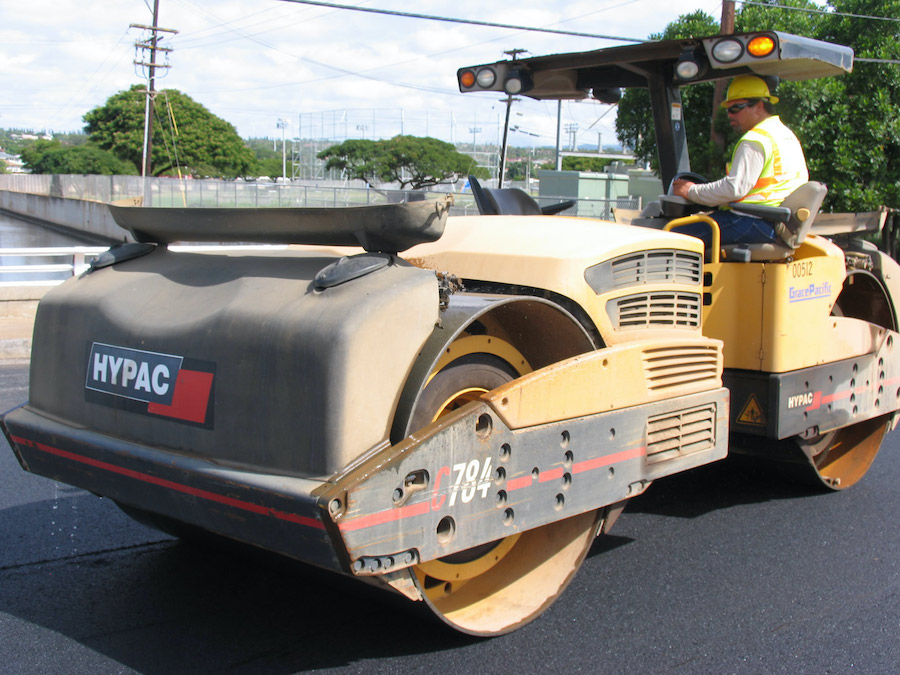
Vibratory vs. Static
You can usually get better compaction results with vibratory steel wheel rollers as compared to static steel wheel rollers. But they have their limitations. An operator must be able to handle compaction variables such as amplitude, frequency, and vibratory mode use. And they are riskier to use for thin overlays and where underground utilities are not buried deeply into the ground.
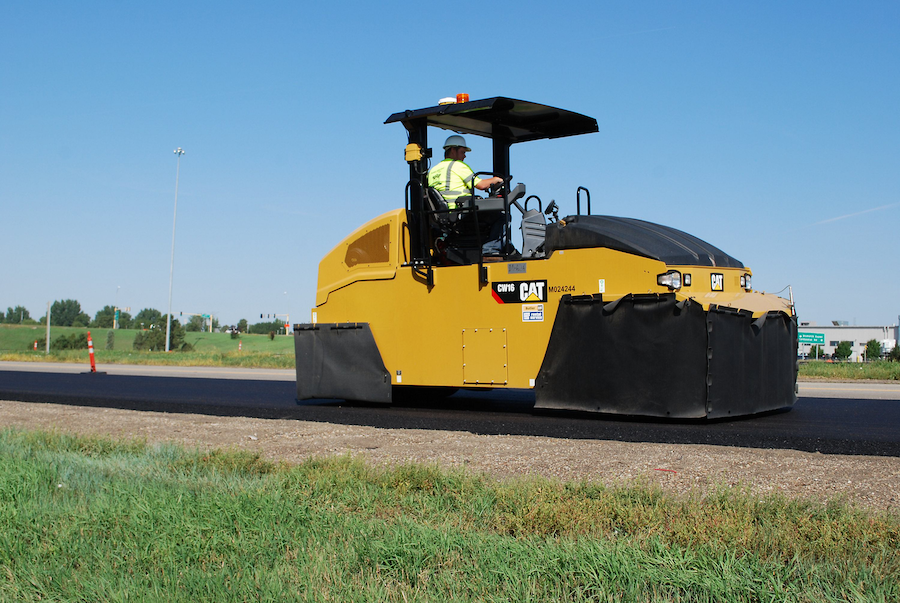
Pneumatic Tire Roller
A pneumatic tire roller uses no-tread pneumatic tires to compact HMA. A set of these smooth tires is on each axle. Usually there are four on one axle and five on the other axel. The amount of compaction pressure is adjusted by varying tire pressure. The front axle tires are aligned with the space between the rear axle tires. This provides uniform compaction over the roller width.
Job Requirements
Buying pavers, compactors, and millers requires a careful review of your job requirements. Are you paving roadways or parking lots? Are you working in tight spaces? What are the dimensions of the finished product?
Requirements Document
Your documented requirements help you determine the essential tasks the equipment must perform. You can keep a separate list of optional functions that would be nice to have but are not true requirements. This helps keep you focused as you shop for equipment. You can hand over your requirements document to your local equipment dealer so they can provide recommendations.
Sizing Up
Sizing up the machine for future larger jobs may sound like a good idea, but think this through carefully. If you are new to the paving business, it makes sense to get started on smaller jobs until you learn your craft and build your client portfolio. The big job you land in the future may require completely different equipment. You can always rent larger machinery if a great opportunity arises sooner than you anticipate.
Specifications and Features
Each paving, compaction, and milling machine has specifications and features to consider.
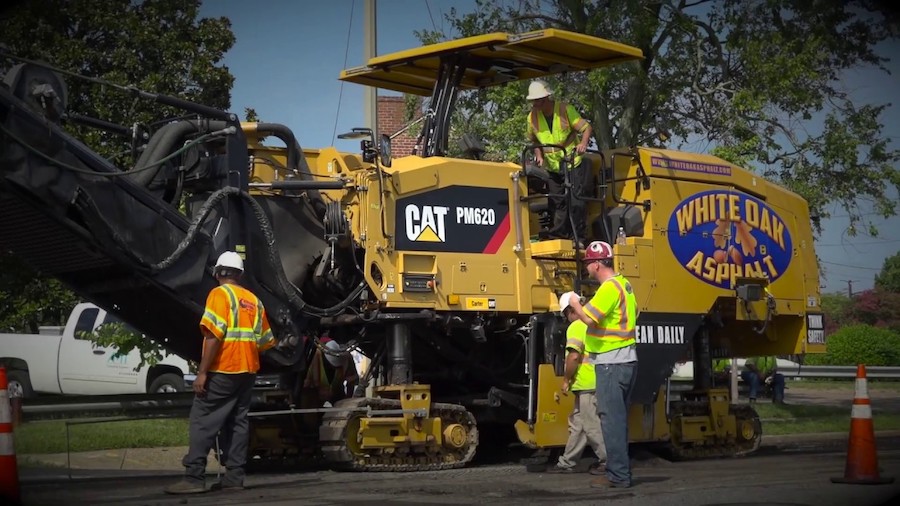
Milling
Tracks
You can select three- or four-track machines. However, three-track machines provide easier turning because the side wall of the cut doesn’t get in the way.
Cutter System
The tooth spacing and lacing pattern of the cutter drum depend on your application. Typically tooth spacing is between 5/8 inch to .2 inches. The smaller spacing is for micro-mill patterns.
Conveyors
Make sure you have enough capacity to handle the cutting depth your job requires. If not, the machine will work harder to get the material out. This slows you down and reduces production.
Controls
Controls should be easy to reach and read. The easier the controls are to understand, the less time it will take to train workers.
Comfort
There is a direct correlation between worker comfort and production. In some cases, comfort is related to safety. For example, an isolated operator platform reduces vibration. A worker getting jostled around all day can cause long-term nerve damage. Milling machines that have the weight of the platform resting on isolation dampeners can virtually eliminate vibration.
Paving
Some key features of pavers include:
Hopper Size
The hopper is where the delivery truck initially dumps the HMA. You can use inserts to expand its holding capacity.
Screed
The screed affects the quality and density of the asphalt road. There are three types of screeds: vibratory-only, vibratory and single or dual tamper bar, vibratory, tamper, and pressure bar. Most paving jobs in the U.S. are handled with vibratory-only screeds as they allow paving at higher speeds.
Conveyor
HMA flow from the conveyor is regulated through variable speed conveyors with augers or flow gates. These are raised and lowered either manually or automatically via a feed control system.
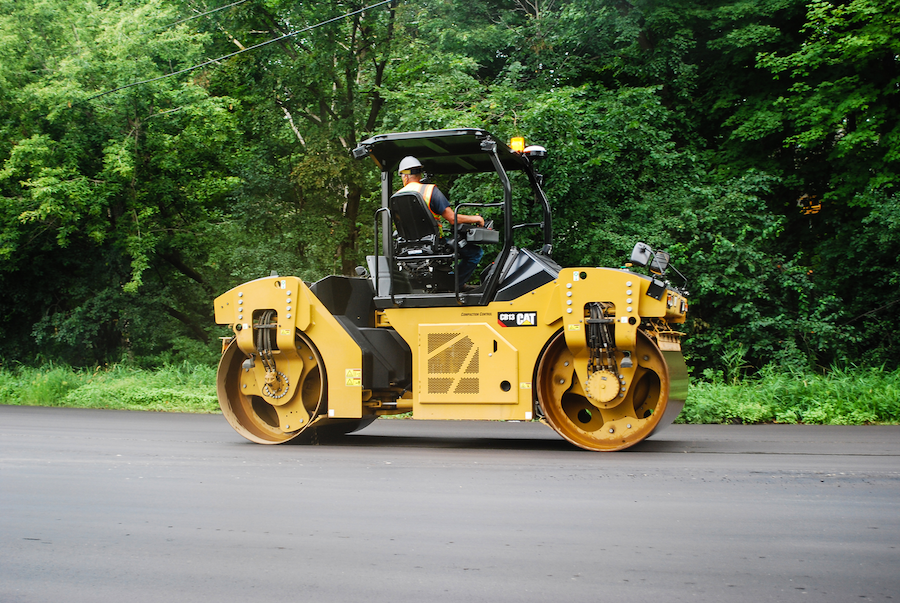
Compaction
The most important decision when selecting your compaction machine is whether you’ll choose steel-wheeled (vibratory or static) or a pneumatic tire roller. Width and weight of either machine must be sufficient to create the smoothest and strongest pavement possible.
Technology
Technology can definitely benefit the bottom line. Research whether the added expense of automation saves money overall. Examples of technological advances in the paving, compaction, and milling space include:
- Compactors that monitor and adjust vibratory rates.
- Asphalt pavers that use thermal imaging or cameras and sensors to measure the temperature of the finished mat. This tells you how quickly you need to start rolling the new pavement.
- Onboard computers on compactors that measure downward displacement, rotation frequency, and speed.
Construction equipment is getting smarter and more autonomous. They can increase safety and efficiency. Keep an open mind but make sure you understand what the technology offers. You also want to consider the time and cost to train workers and maintain the machines.
How to Buy
There are several ways to buy your paving, compaction, and milling equipment. New is nice, but don’t be afraid to explore used machines. Whether new or used, pay close attention to the warranty and service agreements offered. An extended warranty may make sense. It often costs more up front to go with a reputable dealer, but cheap equipment from a fly-by-night company is a short-sighted alternative. You want to know that you’re covered if your machine fails. Auctions are also an option, but experience and reputation matter. If you’re new to auctions, make sure you understand all the rules before you participate.
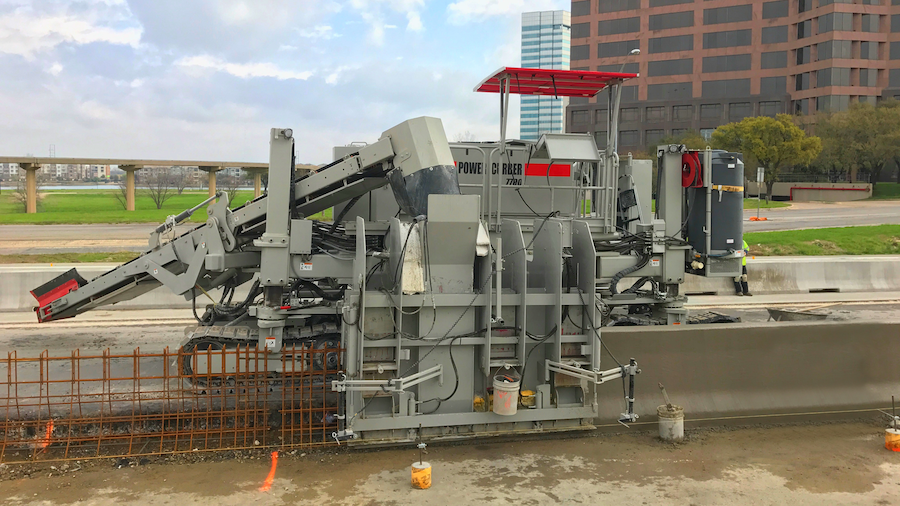
Price
Shop product before you shop price. After all, you need to know how much it costs to procure a machine that will get the job done. Remember that requirements document you created? Now is the time to put it to good use. Yes, dealers are going to ask what you want to spend. Let them tell you how much it costs to get a machine that meets your requirements.
Financing
Financing terms are typically more attractive when buying new. Consider rent-to-own. In some cases, a long-term rental contract beats owning. Take the time to compare the options. If you have a lot of business, a new machine with favorable financing may cost less in the long run. Remember that everything is negotiable. Especially for specialized equipment that provides a dealer with a smaller pool of buyers. They may need to sell more than you need to buy – giving you the edge.
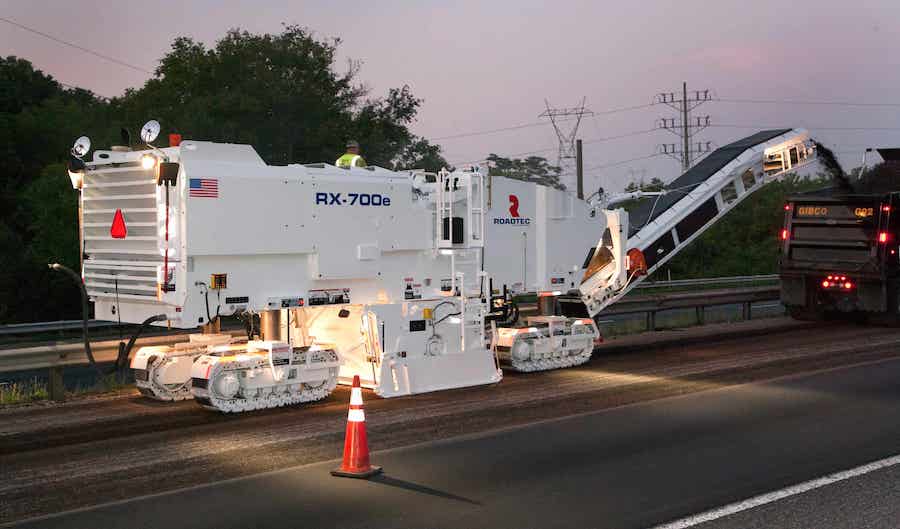
Inspection
A proper inspection before you buy used equipment is critical. Since you can’t test drive paving, compaction, and milling equipment, you’ll need to carefully inspect before you buy a used one. All construction equipment goes through hard use, but this type of equipment is exposed to hot mixes and beaten with chewed up asphalt and aggregate. If possible, bring along a technician to conduct the inspection. Include these items in your inspection checklist:
Milling
- Chewing up and spitting up asphalt is brutal on your milling machine’s drums and cutters.
- The cooling and dust-control spray heads should be clean.
Paving
- Hard aggregate in HMA can wear out the screed plate on asphalt pavers.
- Damaged or worn heater units increase the wear and tear on other parts of the paver.
- A paver can’t function with bad auger bearings.
- Bent hopper winds indicate rough use.
Compaction
- The drum roller scraper bars keep the drum clean and wet and should be in good condition.
- Spray heads should be clean.
- Scarred drums will damage a new asphalt mat.
For all machines, be sure to inspect components such as belts and chains. Smaller components can provide clues as to whether the machine was used responsibly or abused. If these parts are in particularly poor condition, it may indicate that unseen parts may be on the verge breaking.
Popular Manufacturers
There are several manufacturers of paving, compaction, and milling equipment.
Astec Industries — Astec has several locations in the United States and around the world. They sell a wide-variety of what they term “infrastructure solutions.” Their Roadtec brand offers several milling machines from the compact RX300 to the mammoth RX900.
Caterpillar — Is there any piece of construction equipment Caterpillar doesn’t sell? Well they don’t just sell ‘em – they rent ‘em. The Cat Rental Store offers used paver and compaction equipment.
Dynapac — This Swedish firm introduced the first vibratory roller for asphalt compaction in 1953. They sell a variety of rollers. Their Dynapac F80W Mini Paver is perfect for narrow lanes like bike paths and walkways.
Gomaco — This Iowa company was founded in 1965. They offer several slipform paving machines and curb-and-gutter pavers. Their highly portable Curb Cadet can work in a tight 24-inch radius.
HEM Paving — This Iowa company has been selling a wide range of concrete paver machines for over twenty years. They now offer micro overlay pavers that are light and portable.
Leeboy — Leeboy has been in business for over half a century. They sell several asphalt paver models. Their 1000G model offers variable paving widths up to 13 feet.
Mauldin — Headquartered in South Carolina, Mauldin manufactures five models of asphalt pavers. The largest offers seamless paving up to 16 feet wide. They also sell used machines.
Miller Formless — Miller is based in Illinois and has been selling construction equipment since 1970. They specialize in concrete curb and gutter machines. Their M-2530 is a 3 track curb, curb and gutter, and sidewalk slipform paver.
Power Pavers — Like the name says, Power Pavers specializes in pavers – slipform and form pavers. They’ve been making them in North Carolina for about 7 decades. Their SF-2404 has a telescoping frame so you adjust the width from 8 feet to 20 feet without adding rigid frame extensions. They also sell used equipment.
Conclusion
Paving, compacting, and milling has come a long way since the early 1900s. Today’s pavers, compactors, and milling machines can handle paving jobs big and small efficiently. Milling offers the side benefit of creating material you can sell or use for your own recycling business. As with any large piece of construction equipment, take the time to fully understand your job requirements to select the right machines for your project. Work with reputable dealers and negotiate the best deal possible.
